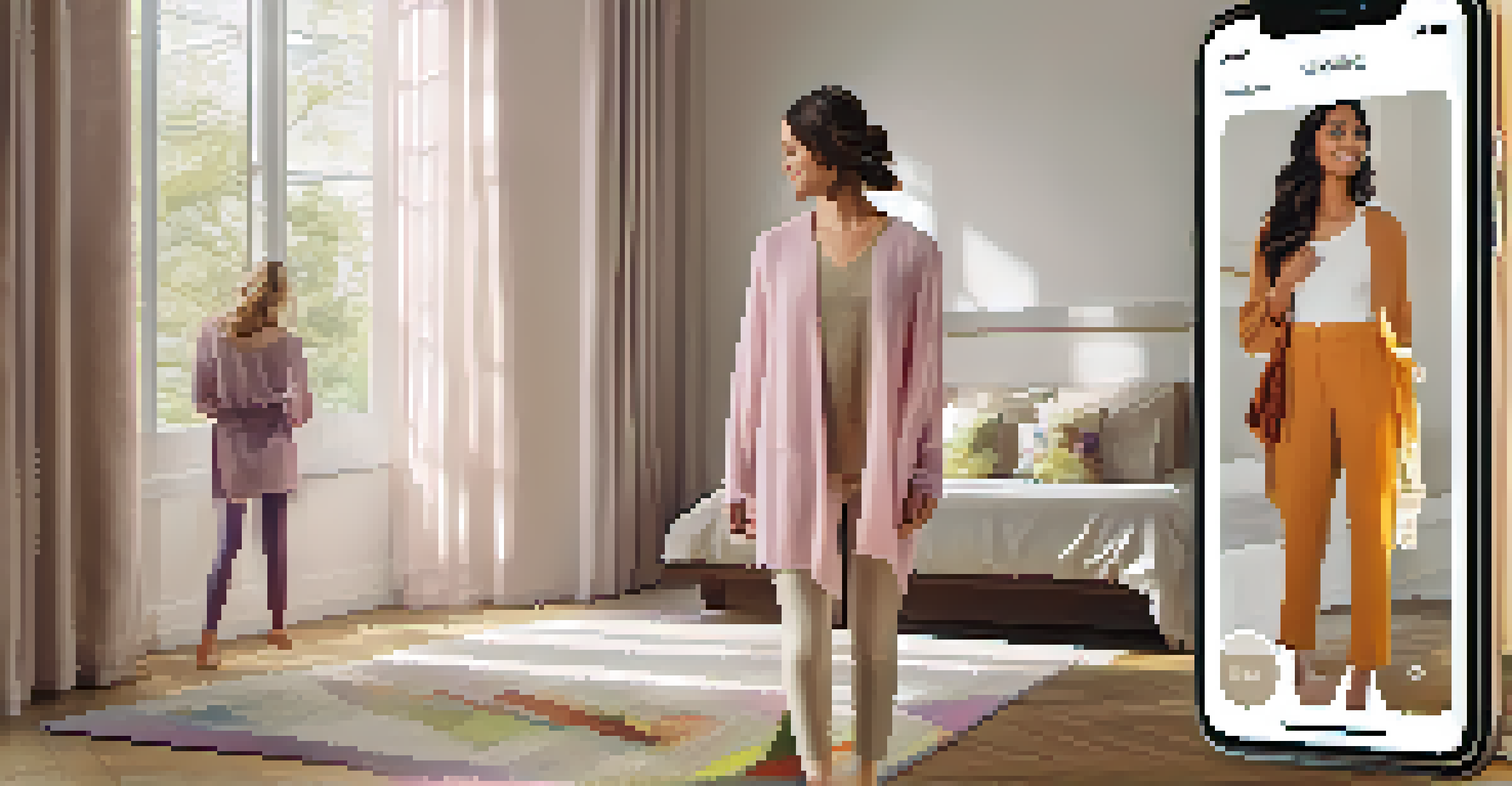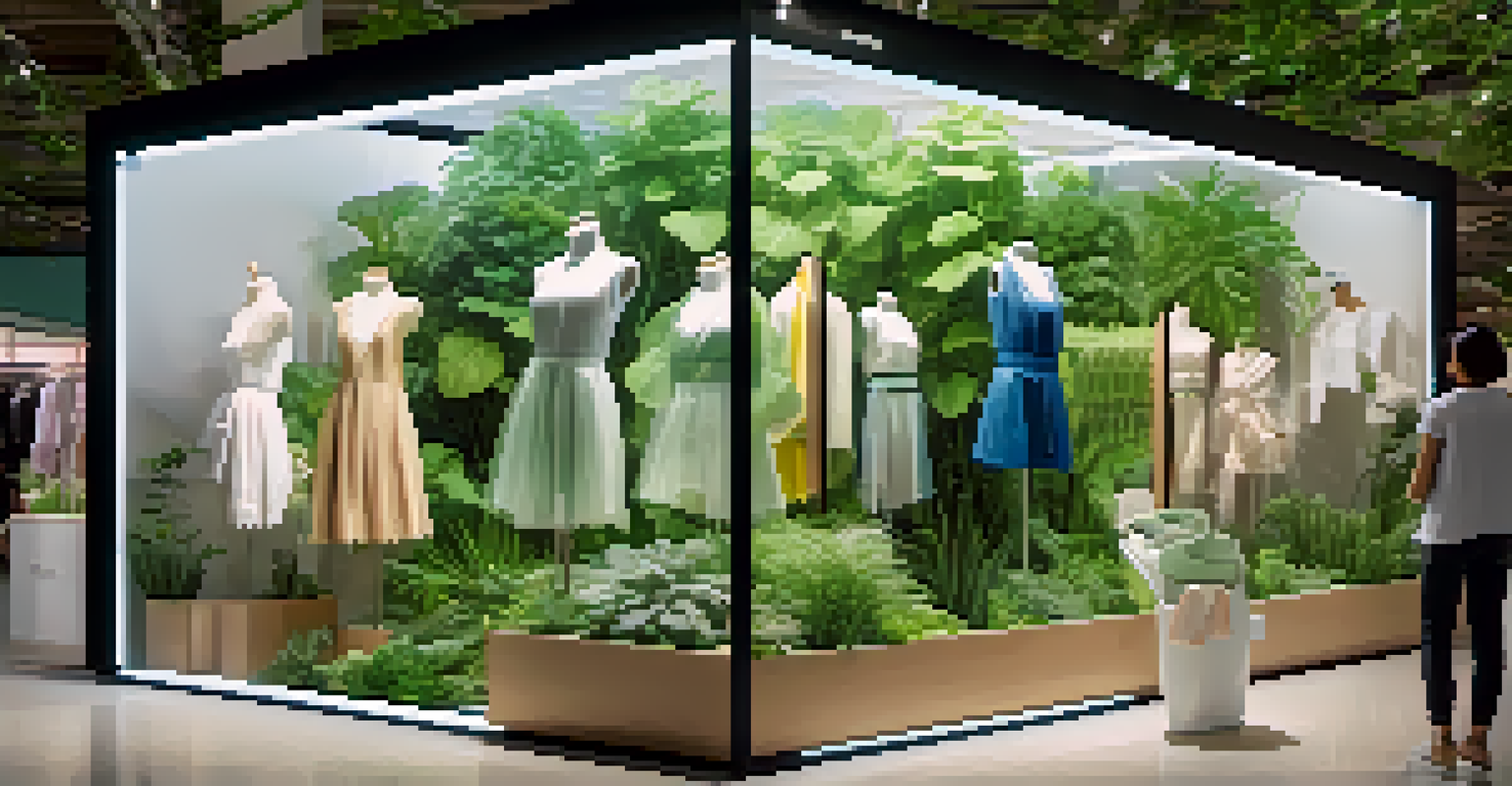The Future of Fashion Retail: Smart Mirrors and AI

Understanding Smart Mirrors in Fashion Retail
Smart mirrors are transforming the way we shop for clothes. These high-tech mirrors, equipped with augmented reality, allow customers to try on outfits virtually. Imagine standing in front of a mirror and seeing yourself in different outfits without ever stepping into a fitting room.
Technology is best when it brings people together.
The technology not only shows how clothing looks on you but also provides personalized recommendations based on your preferences. This creates an engaging shopping experience where customers feel empowered to make decisions. By merging the physical and digital worlds, smart mirrors eliminate the hassle of traditional fitting rooms.
As retailers invest in this technology, they are also collecting valuable data on customer preferences and behaviors. This insight can help brands tailor their products and marketing strategies, ultimately leading to a more personalized shopping experience for everyone.
AI: The Brain Behind Fashion Retail Innovations
Artificial Intelligence (AI) is at the forefront of modern technology, and its impact on fashion retail is profound. AI algorithms analyze vast amounts of data to predict trends, manage inventory, and enhance customer experiences. This ensures that retailers stock the right products at the right time.

Additionally, AI-powered chatbots are becoming common in online shopping environments. They assist customers with queries, recommend products, and even help with checkout, making the shopping process smoother and more efficient. By using AI, retailers can offer 24/7 support without the need for human intervention.
AI Drives Fashion Retail Innovations
Artificial Intelligence helps retailers predict trends and personalize marketing, enhancing customer experiences and improving inventory management.
Moreover, AI can help in personalizing marketing campaigns, ensuring that customers receive messages tailored to their interests. This level of customization not only improves engagement but also increases the likelihood of conversions, making AI an invaluable tool for fashion retailers.
The Role of Augmented Reality in Shopping
Augmented Reality (AR) enhances the shopping experience by merging the real world with digital information. In fashion retail, AR can help customers visualize how different outfits would look on them in real-time. This technology makes shopping more interactive and fun, especially for younger consumers.
The future of fashion is sustainability, transparency, and technology working hand in hand.
For instance, some brands have developed AR apps that allow users to see how clothing fits and moves as they walk or pose. This level of engagement can significantly influence purchasing decisions, as customers feel more confident about their choices. It's like having a personal stylist right at your fingertips.
Furthermore, AR can also be used to create immersive in-store experiences. Imagine walking into a store where the walls display different fashion looks or styles that you can interact with. This not only captures attention but also fosters a deeper connection between consumers and the brand.
Enhancing Customer Experience with Personalization
Personalization is becoming a cornerstone of the shopping experience in fashion retail. With AI and data analytics, brands can tailor offerings based on individual customer preferences. This means that when you enter a store or website, the recommendations you see are specifically curated for you.
For example, if a customer frequently shops for casual wear, the system might highlight new arrivals in that category. This targeted approach not only saves time for shoppers but also enhances their satisfaction, making them more likely to return. Personalization can create a sense of loyalty and connection to the brand.
Sustainability Meets Technology
Technology, including smart mirrors and AI, aids retailers in promoting sustainability by optimizing inventory and providing transparency in sourcing.
Moreover, by understanding customer behavior, retailers can proactively address needs and preferences. This could range from sending personalized offers to suggesting complementary items, making the shopping journey more enjoyable and efficient.
Sustainability and Technology in Fashion Retail
As the fashion industry faces scrutiny over its environmental impact, technology is stepping in to promote sustainability. Smart mirrors and AI can help retailers reduce waste by optimizing inventory management. By predicting what styles will sell, brands can minimize overproduction and excess stock.
Additionally, consumers are becoming more conscious of their purchasing habits, and brands that showcase sustainable practices are gaining favor. Using technology, retailers can provide transparency about their sourcing and production processes. This allows customers to make informed choices aligned with their values.
Furthermore, sustainable fashion initiatives can be promoted through augmented reality experiences. By showing the journey of a product from concept to consumer, brands can engage customers and encourage more responsible purchasing behaviors.
Challenges and Considerations for Retailers
While the benefits of smart mirrors and AI are clear, there are challenges that retailers must navigate. The initial investment in technology can be significant, and not every brand has the budget for such innovations. Additionally, integrating these systems into existing operations requires careful planning and execution.
Moreover, privacy concerns surrounding data collection cannot be overlooked. Customers are increasingly wary of how their information is used, and retailers must be transparent about their practices. Building trust is essential, as consumers need to feel secure in sharing their data.
Smart Mirrors Enhance Shopping Experience
Smart mirrors use augmented reality to allow customers to try on clothes virtually, creating a more engaging and personalized shopping experience.
Finally, as technology evolves, retailers must stay agile and adapt to changing trends. What works today may not be effective tomorrow, so ongoing training and development for staff is crucial to keep pace with advancements in fashion retail technology.
The Future Landscape of Fashion Retail
Looking ahead, the landscape of fashion retail is set to change dramatically. With the continued integration of smart mirrors, AI, and augmented reality, shopping will become more personalized and enjoyable. Customers will likely expect these technologies as standard features rather than luxuries.
As brands innovate, they will also need to prioritize sustainability and ethical practices. Consumers are increasingly seeking brands that align with their values, and those that can effectively communicate their commitment to sustainability will thrive. This shift in consumer behavior will drive the industry towards more responsible practices.

Ultimately, the future of fashion retail is about creating a seamless blend of technology and human experience. Retailers who embrace these changes and put customers at the center of their strategies will be well-positioned to succeed in the evolving marketplace.